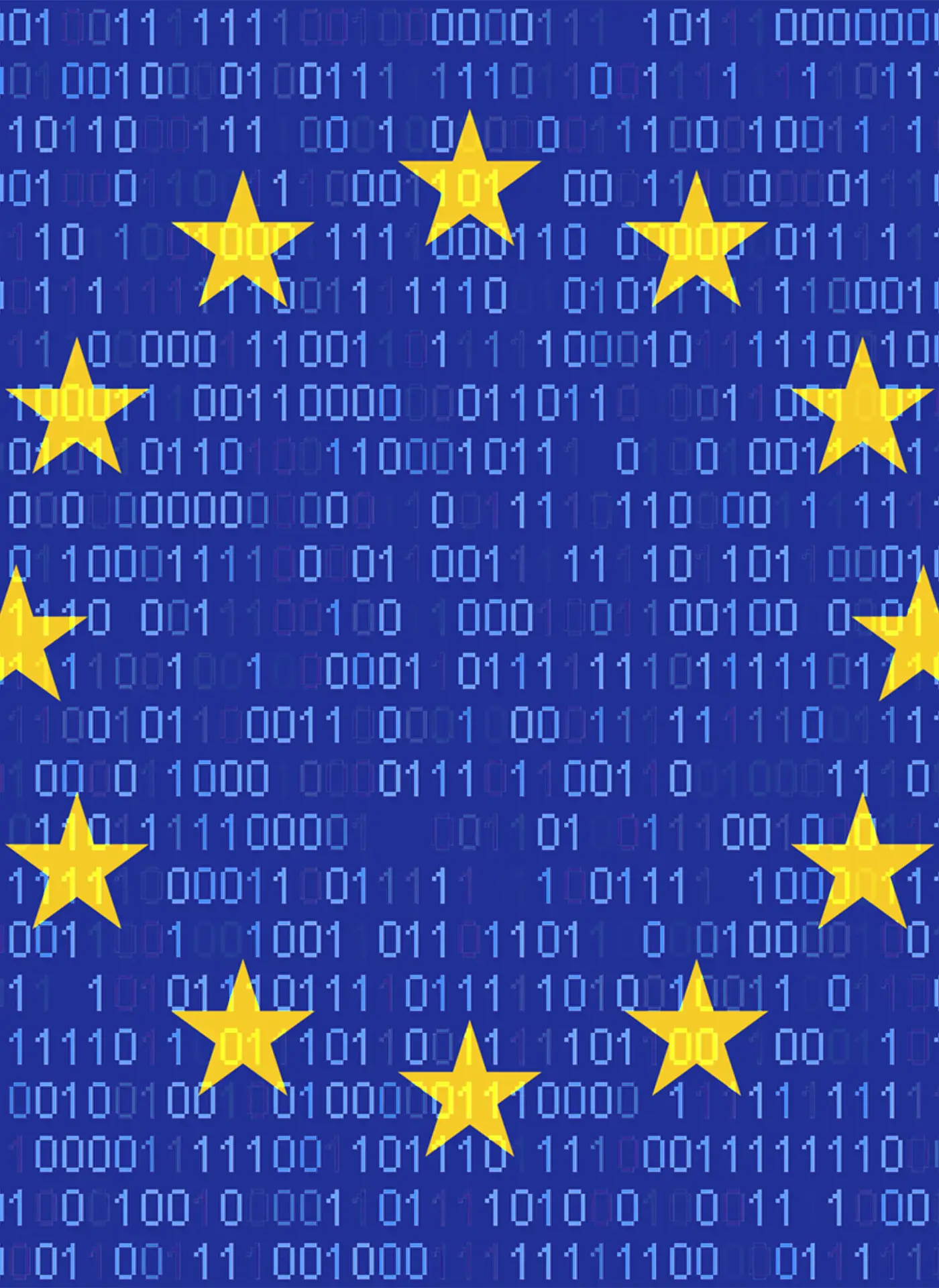Key Takeaways
- European Accessibility Act (EAA): In effect since June 2025, the EAA unifies accessibility rules across the EU, ensuring digital access for people with disabilities and simplifying compliance for businesses.
- WCAG as a roadmap: Businesses are increasingly relying on the Web Content Accessibility Guidelines (WCAG) as the primary technical standard to achieve and maintain EAA compliance.
- Mandatory accessibility: The EAA makes accessibility a mandatory requirement for businesses operating in the EU, impacting a broad range of products and services and benefiting both consumers and businesses.
Listen: EAA and WCAG: a guide to EU accessibility compliance.
A major shift in digital accessibility is underway in the European Union. The European Accessibility Act (EAA) has been in effect since June 28, 2025, establishing a unified set of accessibility rules for businesses across all member states. This landmark directive aims to ensure that millions of people with disabilities have equal access to essential products and services. For businesses that operate in the EU, the question is no longer whether they need to be accessible, but how.
Many organizations are turning to the globally recognized Web Content Accessibility Guidelines (WCAG) as their roadmap. But is following WCAG the best or only way to achieve EAA compliance? The relationship between the legal framework of the EAA and the technical standards of WCAG is critical for businesses to understand.
This guide will explore how WCAG aligns with the EAA, discuss its role as the primary path to compliance, and help you navigate the realities of enforcement and ongoing compliance.
What is the European Accessibility Act (EAA)?
The European Accessibility Act is an EU directive designed to harmonize accessibility rules across the internal market. Before the EAA, businesses had to navigate a patchwork of different national regulations, which created complexity and barriers to trade. The EAA simplifies this by establishing a standard set of accessibility requirements for key products and services.
According to the European Commission, the goal is to benefit consumers and businesses. People with disabilities and the elderly gain access to more accessible products at competitive prices, while businesses benefit from clearer rules and easier cross-border trading.
The EAA applies to a wide range of products and services, including:
- Computers, smartphones, and their operating systems.
- ATMs, ticketing machines, and other self-service terminals.
- E-commerce websites and mobile apps.
- Consumer banking services.
- E-books and e-readers.
- Access to audiovisual media services (like streaming platforms).
- Websites and apps for passenger transport services.
Unlike a regulation, a directive sets a goal that each EU country must translate into its own national laws. While this means some minor variations may exist between countries, the core accessibility requirements remain consistent.
WCAG's role in European Accessibility Act compliance?
The EAA itself does not explicitly state that businesses must conform to WCAG. Instead, it outlines functional accessibility requirements. For example, information must be “perceivable, operable, understandable, and robust.” If those four principles sound familiar, it's because they are the foundation of WCAG.
So, what is WCAG? The Web Content Accessibility Guidelines (WCAG) are a set of internationally recognized technical standards for web accessibility. To define WCAG simply, it provides a detailed framework for making digital content accessible to everyone, including people with disabilities.
In short, the EAA is the law, and following WCAG is how you comply.
While the EAA is a legal mandate, WCAG provides the technical specifications needed to meet it. It offers clear, testable success criteria that Designers and Developers can use to build accessible websites, apps, and digital products. For example, where the EAA requires a service to be ‘operable,' the WCAG guidelines provide specific criteria for keyboard navigation, focus indicators, and target sizes that make this principle a reality. These WCAG accessibility guidelines are the technical blueprint for achieving functional access.
Are there alternatives to WCAG?
While WCAG is the de facto standard, the EAA's framework is technically open to any solution that meets its functional requirements. A business could, in theory, develop its own methods to make its products perceivable, operable, understandable, and robust without strictly following WCAG.
However, this approach comes with significant risks and challenges:
- Burden of proof: Without the backing of an internationally recognized standard like WCAG, a business would have a much harder time demonstrating compliance to market surveillance authorities. You would need to create extensive documentation to prove that your proprietary methods satisfy every relevant EAA requirement.
- Lack of clarity: WCAG provides a common language and a clear checklist for accessibility. Creating a new system from scratch would be resource-intensive and prone to interpretation errors.
- Industry inconsistency: The EAA's goal is to harmonize standards. If every company created its own compliance framework, it would defeat the goal of creating a predictable and unified market.
For these reasons, attempting to meet EAA requirements without using WCAG as a guide is not a practical strategy for most businesses. While WCAG conformance is not explicitly required, these principles make WCAG an excellent practical reference for digital accessibility compliance. Adhering to WCAG 2.2 Level AA guidelines is the most reliable and defensible strategy for achieving WCAG compliance.
Practical steps to prepare for the EAA deadline
Now that the EAA enforcement date has passed, businesses must ensure they are maintaining ongoing compliance. Waiting until the last minute will likely result in costly fixes and potential legal penalties. Here are four steps you can take now.
1. Conduct a thorough WCAG audit
The first step is a web accessibility audit. This WCAG audit evaluates your digital products against WCAG 2.2 Level AA criteria. This audit should combine automated scanning with manual testing by experts, including people who use assistive technologies. The final report will highlight any areas of non-compliance and help you prioritize which issues to address first.
2. Remediate and fix accessibility issues
With your audit report in hand, your Development Team can start addressing the barriers identified. Focus first on issues that most impact usability, such as fixing keyboard navigation traps, adding alternative text to images, improving color contrast, and captioning video content. These actions are essential in making your digital assets more perceivable and operable for all users.
3. Integrate accessibility into your workflow
View accessibility as a continuous practice, not a one-time fix. To ensure long-term compliance and avoid future issues, embed accessibility into your entire product development lifecycle. This approach is often referred to as “shifting left.” Train your Designers, Developers, Content Creators, and Quality Assurance Teams on accessibility best practices. Use a WCAG checklist to make accessibility a standard part of your design system and coding practices. This WCAG guidelines checklist ensures your teams don't miss crucial steps during development.
4. Monitor and maintain compliance
Maintaining accessibility is an ongoing effort. Establish a consistent process to regularly monitor digital assets. Set up clear channels so users can easily report accessibility issues they encounter. Having a dedicated team to oversee EAA compliance and respond promptly to feedback is an important part of a successful accessibility strategy.
A clear path forward
The European Accessibility Act represents a monumental step toward a more inclusive digital society. While the directive itself sets the legal framework, the Web Content Accessibility Guidelines provide the practical, technical roadmap for businesses to follow. The consensus is clear: aligning your digital products and services with WCAG 2.2 Level AA is the most reliable and efficient strategy for achieving EAA compliance.
By viewing accessibility not just as a legal hurdle but as a strategic advantage, you can expand your market, improve the user experience for everyone, and strengthen your brand's reputation. With the June 2025 deadline now behind us, businesses operating in the EU should shift their focus to ongoing compliance and promptly address any remaining accessibility gaps. Sustaining your commitment to accessibility ensures you meet legal requirements and continue building a digital world that is truly open to all.
Latest.

How to empower leaders with AI for generational collaboration.
Leadership & Management, Consulting & Operations, Engineering & Technology, Innovation & Emerging Tech

How to move Creative Teams from AI burnout to breakthrough.
Insights from InsideOut, Leadership & Management

How to reduce Scope 3 with carbon negative staffing.
Climate Action, Consulting & Operations, Sustainability












